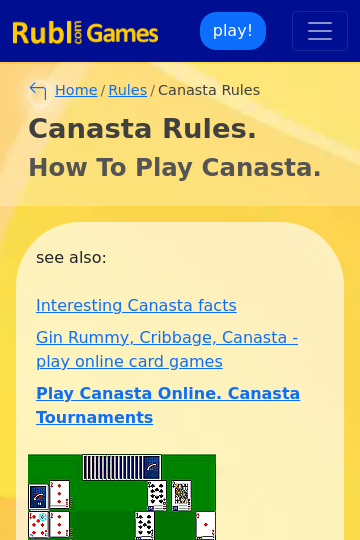

9 ♥ 9 ♣ 9 ♦ 2 ♥ 2 ♣ 2 ♦ Jkr is not legal as it contains more than three wild cards. 5 ♥ 2 ♣ 2 ♥ is not a legal meld as it contains only one natural card. Examples: 5 ♥ 5 ♣ 2 ♥ and 9 ♥ 9 ♣ 2 ♥ 2 ♣ Jkr are legal melds. Threes may never be melded in ordinary play, although three or more black threes may be melded in the final turn of a player going out.Ī meld must consist of at least two natural cards, and can never have more than three wild cards. Wild cards can be used as any rank except for threes. Suits are irrelevant except that black threes are treated differently from red threes. A legal meld consists of at least three cards of the same rank, and there is no limit on how large it can grow. A player may never play to an opponent's meld. No player may "undo" a meld or laid card, or change their mind after drawing a card from the deck.Įach player/team keeps separate melds of the various ranks of cards. A turn ends when the player discards one card from their hand to the top of the discard pile. The player may then make as many legal melds as they wish from the cards in their hand. If the card drawn from the stock is a red three, the player must table it immediately, as one would if melding, and draw another card.

(See Picking up the discard pile, below). However, there are restrictions on when one can pick up the discard pile. A turn begins either by drawing the first card from the stock into the player's hand or by picking up the entire discard pile. The player to the dealer's left has the first turn, and then play proceeds clockwise. If a player was dealt red threes, they must instantly play them face up in front of them and draw the same number of replacement cards. That continues until a natural card or a black three is turned up. If that card is wild or a red three, another card is turned and placed on top of it. One card is taken from the top of the stack and placed face up to start the discard pile. The remaining cards are left in a stack in the center of the table. The dealer shuffles the pack, the player to the dealer's right cuts, and the dealer deals out a hand of 11 cards to each player. The deal then rotates clockwise after every hand. The initial dealer is chosen by any common method, although in Canasta there is no privilege or advantage to being the dealer. Safe discard (may be melded when going out) Canasta usually uses two complete decks of 52 playing cards (French Deck) with two or three Jokers per deck, making a total of 108 or 110 cards(The amount of Jokers depends on the type of French card deck). If partners are chosen, they must sit opposite each other. Variations exist for two and three player games wherein each plays alone, and also for a six player game in two partnerships of three. The classic game is for four players in two partnerships. Santos and Serrato never patented the game rules, and thus never received royalties from the later Canasta boom. Interest in the game began to wane there during the 1960s, but the game still enjoys some popularity today, with Canasta leagues and clubs still existing in several parts of the United States. Ĭanasta became rapidly popular in the United States in the 1950s with many card sets, card trays and books being produced. In 1949/51 the New York Regency Club wrote the Official Canasta Laws, which were published together with game experts from South America by the National Canasta Laws Commissions of the US and Argentina. Reilly in 1949 and Michael Scully of Coronet magazine in 1953. It was introduced to the United States in 1949 by Josefina Artayeta de Viel (New York), where it was then referred to as the Argentine Rummy game by Ottilie H. Īfter a positive reception of Canasta at their local bridge club, the Jockey Club, in the 1940s the game quickly spread north throughout South America in myriad variations to Chile, Peru, Brazil and Argentina, where its rules were further refined. They tried different formulas before inviting Arturo Gomez Hartley and Ricardo Sanguinetti to test their game. The game of Canasta was devised by attorney Segundo Sanchez Santos and his Bridge partner, architect Alberto Serrato in Montevideo, Uruguay, in 1939, in an attempt to design a time-efficient game that was as engaging as Bridge.


 0 kommentar(er)
0 kommentar(er)
